by Alessandra Ressa
All photos courtesy of Alessandra Ressa
It so happened that during one of my recent urban walks, after reaching the very top of Boschetto hill from via Pindemonte, past the imposing hunting palace that belonged to Archduke Franz Ferdinand, I decided to proceed uphill along the narrow trail in the woods parallel to via Marchesetti, in search of another old trail that used to connect the suburb of Melara to Longera. The trail is barely visible and begins at the end of the parking lot across the street from the entrance to Parco di Villa Revoltella. Muddy and slippery as it was, it gave me the chance to spot some interesting archeology in the woods, such as the perfectly camouflaged remains of an old Vespa enjoying eternity in this part of town.

Apart from the occasional bright red E.N.P.A. sign forbidding hunting (I assumed it would have been forbidden anyway considering the proximity to houses… then again, these were the hunting grounds of the archduke and you never know what old nostalgic Triestini may do) the long trail is not particularly interesting, at least in winter. With its predominately brown color and occasional industrial dumps (I spotted a couple of old washing machines, and wondered how they ever got there), it is mostly used by the animal shelter volunteers to release back into the woods wild creatures that received their assistance.
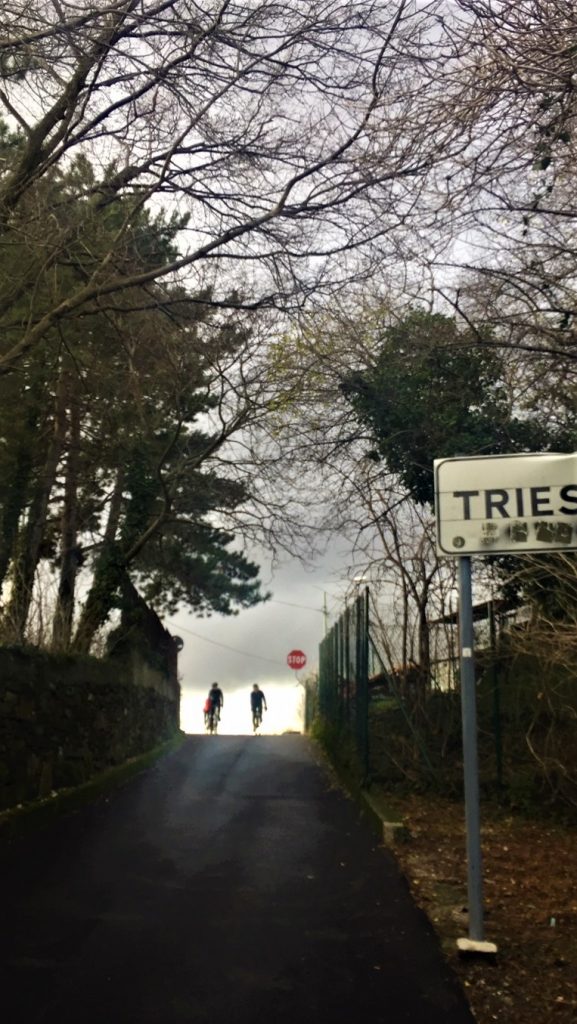
At some point, the trail runs on the side of a steep hill between the newly repaved via Battigelli and Rio Farnetello, an ancient stream in Trieste that, after abundant rains, can offer some unexpectedly pleasant views to the wanderer.
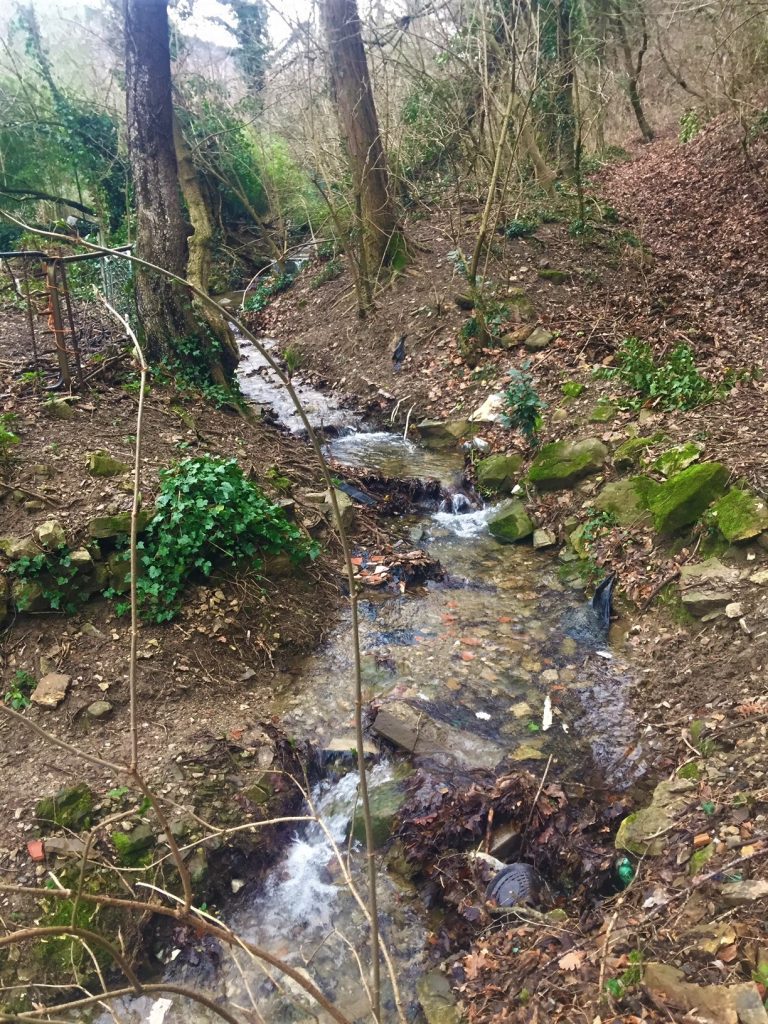
Unfortunately, the seclusion of via Battigelli and the steepness of the hillside have allowed decades of uncontrolled dumping. All the garbage eventually rolled down and reached the stream, and you often end up straddling tires, asbestos panels and other disgusting waste in your path. To put an end to this uncivilized behavior, and possibly to prevent drunk drivers from flying off the edge of the road directly into the stream (there have been several accidents along this road although there appears to be no traffic at all), the municipality has gated, not so effectively I might add, one side of the road.
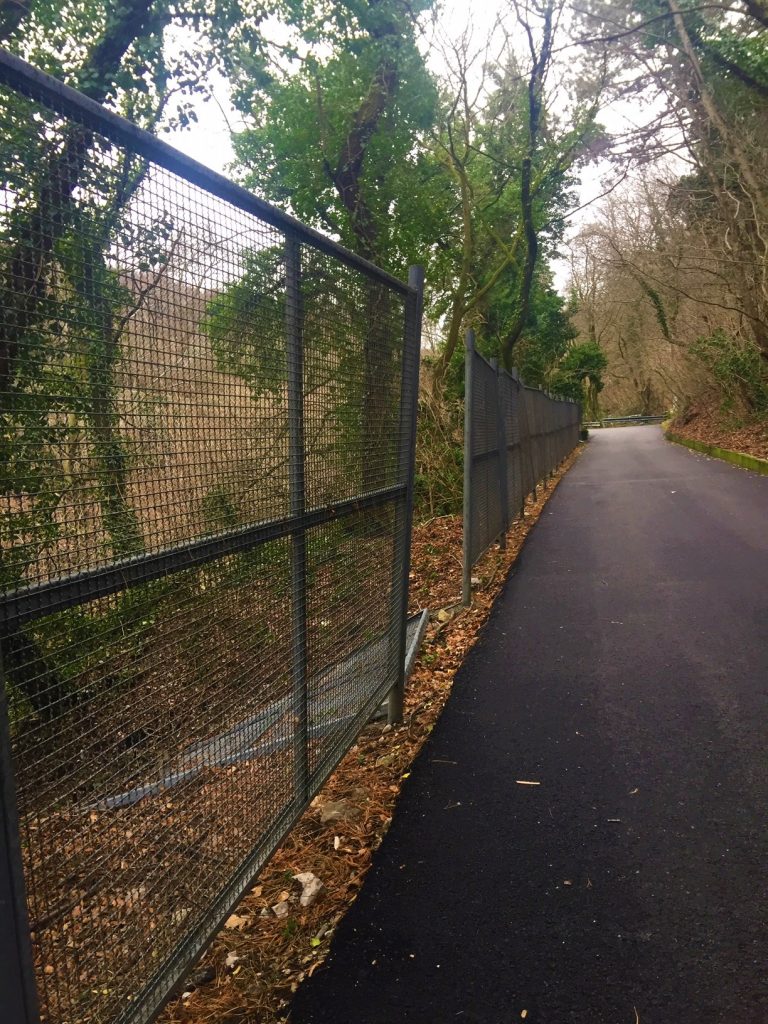
Halfway down via Battigelli is where the muddy trail eventually took me, and here I was, out of the sticky muck and onto the new, dark asphalt of this steep road. I decided to head downhill to Longera village to enjoy its countryside views with its terraced vineyards and stone houses. When I reached the steep turn at the bottom, immediately before the road started its climb up to Longera, I noticed an ancient stone arch, green with moss. Its access had been walled-off with limestone bricks. The road simply stopped there, apparently leading nowhere, but under the thick dry leaves, I was able to discern a tiny trail along the stream.
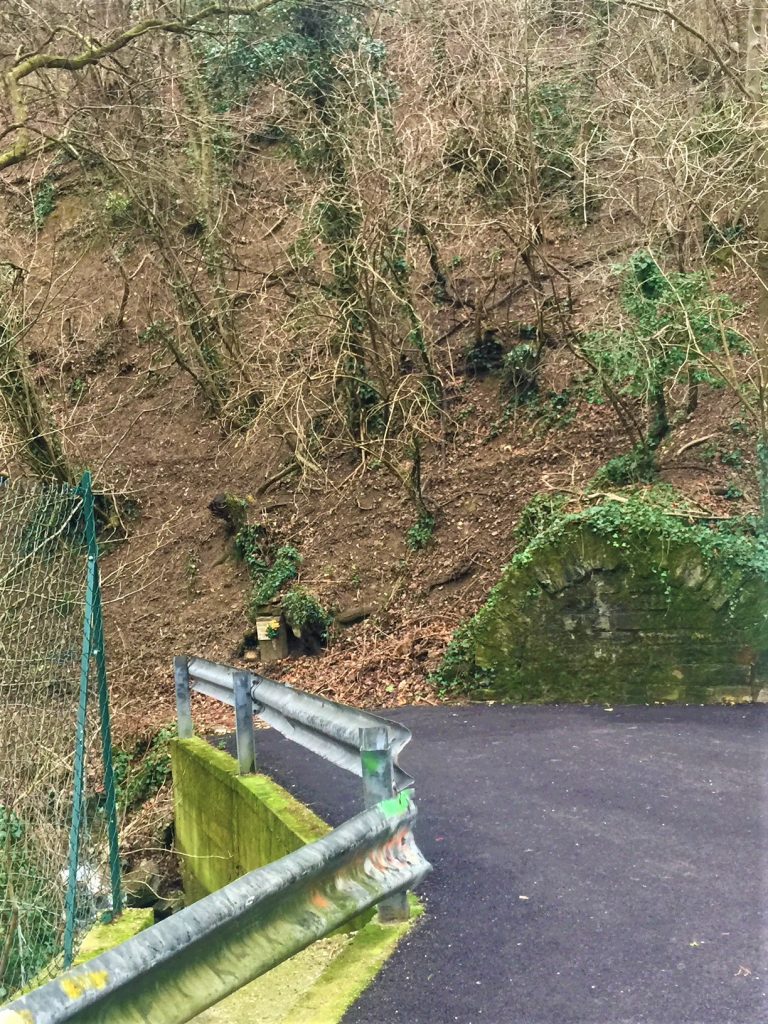
I tried to follow the trail, but soon realized that along the stream little unsafe bridges made of bed springs and old doors led to spooky junkyards where an unimaginable quantity of apparently useless objects, empty jugs, shoes, long dead potted plants, wooden shelters, and strollers, lay scattered. Only the presence of farming tools made me understand these were actually private lots, used, I assumed, by residents. Soon, a sign perfectly matching the spooky atmosphere confirmed my assumptions.
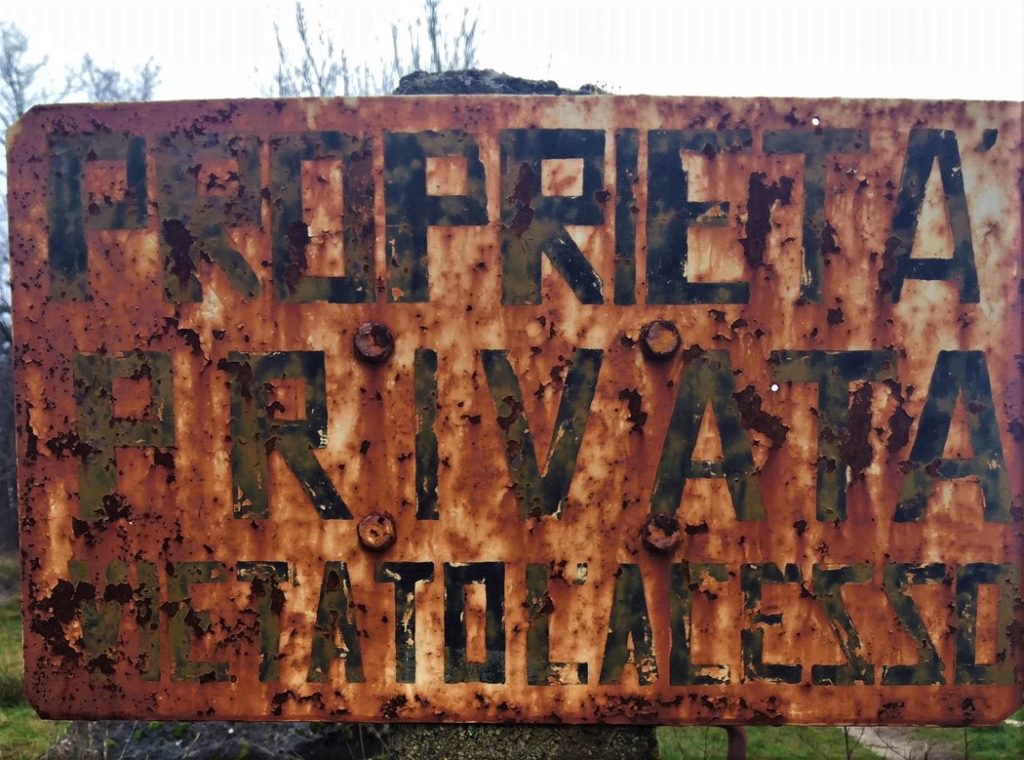
No sooner had I turned around to return to the safety of paved road than a toothless man appeared from one of these tiny lots of junk. He spoke in Slovenian, while his equally toothless dog growled. Luckily, my brain was able to retrieve what little Slovenian I had studied a few years earlier, and the atmosphere immediately became more relaxed. He explained that like many other residents in Longera he proudly belonged to the Slovenian minority and spent his afternoons in his “garden” doing “little jobs”. His name was Peter, 89 years old, and he didn’t want to be photographed.
When we switched to Italian I was able to ask about the walled arch by the road.
“That’s where the witch used to live and come out to hunt children,” he replied.
According to legend, inside the arched tunnel of via Battigelli there lived a witch with green hair, who was often seen riding a wild pig up and down the woods. When Peter was just a little boy, he and his friends were terrified by her. Nevertheless, they would bravely enter the darkness of the old tunnel until they could hear her hoarse breathing, or catch a glimpse of her eyes, before running out screaming. Whoever resisted inside the dark tunnel the longest without even a whimper was considered the bravest.
“I swear she was real like you and me – he said – she would slap us real hard on the head or back any time she was able to reach us from behind. I remember the pain. She actually slapped adults alike, but it was the children she preferred. Sometimes she tried to pull us inside the tunnel.”
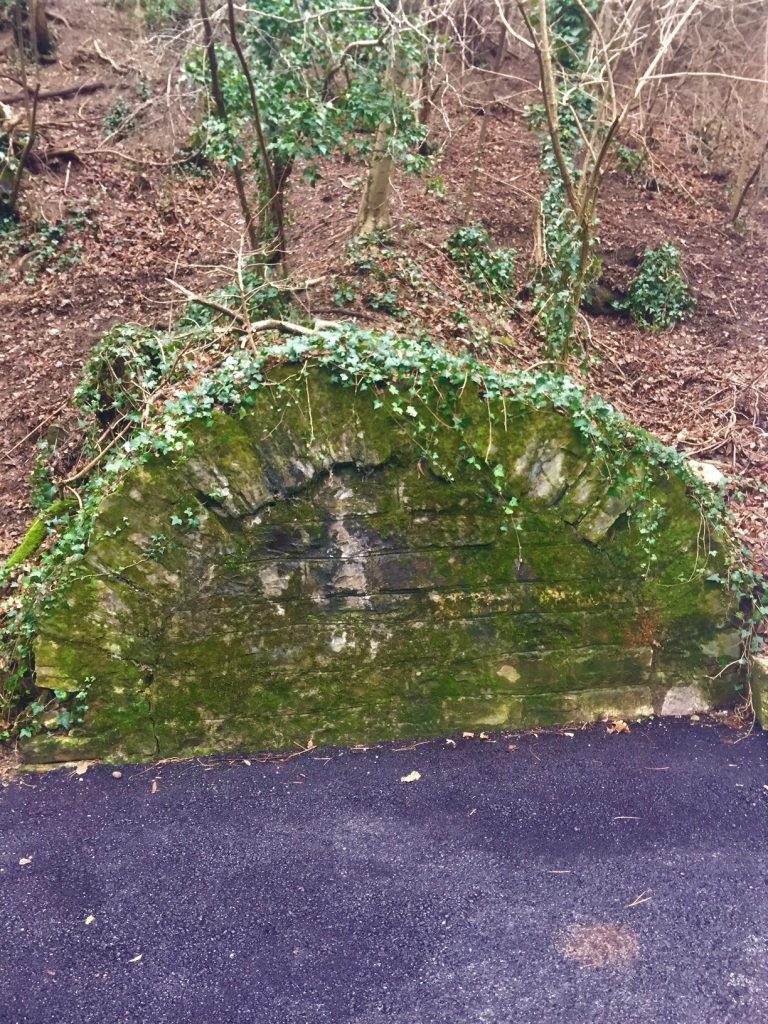
They called her “la Baba,” which in Slovenian is very similar to the dialect word for witch ‘babe,’ while in Trieste dialect it means “the woman.” According to Peter, the tunnel was eventually walled, and the witch trapped inside.
“If you listen carefully – he added – you can still hear her shrills and banging on the wall, especially when Bora is blowing.” I thanked old Peter and later that night tried to find some evidence about the story. Although it is true that there is a legend in Trieste about a witch with green hair riding a wild pig at night, I could find nothing to connect her to the story of “la Baba” in via Battigelli. Other people in the area were also familiar with the story, so I figured there must have been some truth to it.
While the arched tunnel may have been carrying waters since ancient times to Rio Farnetello and was probably later dismissed and walled to avoid accidents, it is absolutely plausible that a crazy old lady may have lived nearby (or even inside the aqueduct) and tormented children. Generation after generation, Trieste has often been known for the eccentricity of its residents.

























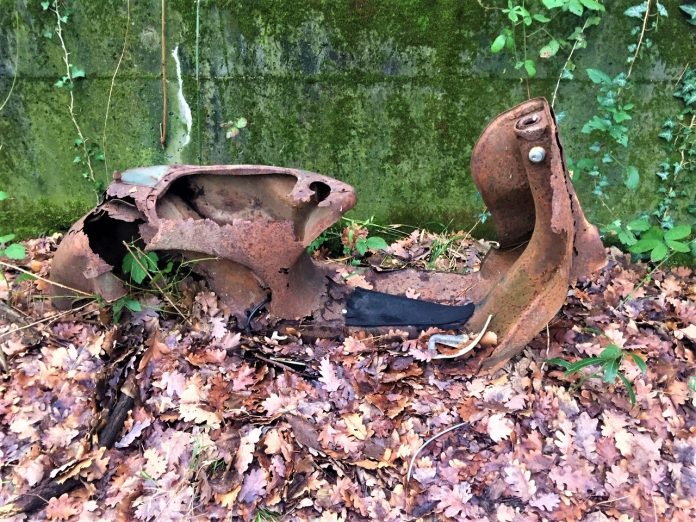




Wow. Trieste is my Grandmother’s home town, and she’s told me of ‘la baba’ before. Coincidentally she ended up marring an Irish American (Grandpa) after the war. Not too often I hear about other people with Italian/Irish/Scottish heritage, or Americans familiar with Trieste for that matter!